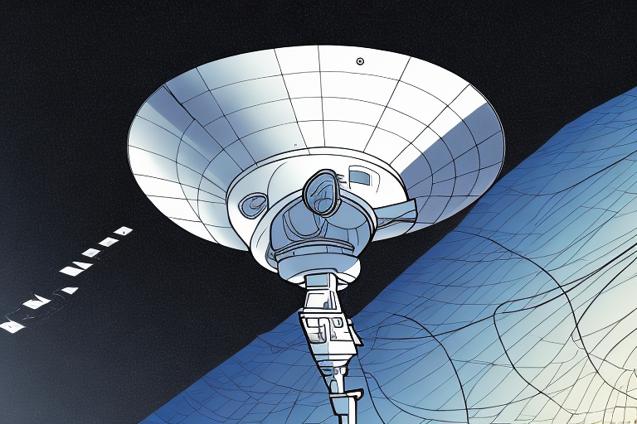
Staying connected while sailing can be a challenge, but it's crucial for safety, finances, and keeping in touch with loved ones. Discover cost-saving tips to help you stay connected without breaking the bank.
The Cost of Staying Connected While Sailing: How to Save Money
Sailing the open seas with your family is an incredible experience, but staying connected to the world can be a challenge. In today’s digital age, it’s essential to have access to the internet for various reasons, such as staying in touch with loved ones, managing finances, and staying updated on weather conditions. However, staying connected while sailing can be expensive. In this article, we’ll explore the different options for staying connected while sailing and provide cost-saving tips and tricks to help you save money.
Understanding the Options for Staying Connected
Before we dive into the cost-saving tips, it’s essential to understand the different options available for staying connected while sailing. There are three primary methods for staying connected at sea: cellular data, satellite communications, and Wi-Fi.
Cellular Data
Cellular data is the most common and affordable option for staying connected while sailing near the coast. Most smartphones and tablets can access the internet through cellular data, and many sailors rely on this method for their primary source of connectivity. However, cellular data is limited by the range of cell towers, which typically extends only a few miles offshore. Additionally, roaming charges can be expensive when traveling to different countries.
Satellite Communications
Satellite communications offer a more reliable and extensive coverage area than cellular data, allowing sailors to stay connected even in the most remote locations. However, satellite communications can be costly, with high upfront costs for equipment and ongoing subscription fees for data usage. There are various satellite communication systems available, such as Iridium, Inmarsat, and Globalstar, each with its own pricing structure and coverage area.
Wi-Fi
Wi-Fi is another option for staying connected while sailing, but it’s typically only available in marinas, anchorages, and other shore-based locations. Many sailors use Wi-Fi as a supplementary method of connectivity, taking advantage of free or low-cost Wi-Fi networks when they’re available.
Cost-Saving Tips and Tricks
Now that we’ve covered the different options for staying connected while sailing, let’s explore some cost-saving tips and tricks to help you save money on your internet usage.
1. Choose the Right Data Plan
When selecting a cellular data plan, it’s essential to choose one that meets your needs without breaking the bank. Consider the following factors when selecting a data plan:
- Coverage area: Ensure the plan offers coverage in the areas you plan to sail.
- Roaming charges: Look for plans that include international roaming or offer affordable roaming rates.
- Data allowance: Choose a plan with enough data to meet your needs, but avoid overpaying for data you won’t use.
2. Use Data Compression Apps
Data compression apps, such as Opera Mini or Google Chrome’s Data Saver feature, can help reduce the amount of data you use while browsing the web. These apps compress web pages, images, and videos before they’re sent to your device, allowing you to use less data without sacrificing the quality of your browsing experience.
3. Limit Background Data Usage
Many apps on your smartphone or tablet use data in the background, even when you’re not actively using them. To save data, adjust your device’s settings to limit background data usage. On most devices, you can do this by going to the “Settings” app, selecting “Data Usage,” and then enabling “Restrict Background Data.”
4. Take Advantage of Free Wi-Fi
Whenever possible, take advantage of free Wi-Fi networks at marinas, anchorages, and other shore-based locations. Be sure to use a VPN (Virtual Private Network) when connecting to public Wi-Fi networks to protect your personal information and ensure a secure connection.
5. Use Offline Apps and Services
Many apps and services offer offline functionality, allowing you to access information and entertainment without using data. For example, you can download maps, weather forecasts, and e-books to your device before setting sail, then access them offline while at sea.
6. Invest in a Wi-Fi Booster
A Wi-Fi booster can help you access Wi-Fi networks from a greater distance, allowing you to take advantage of free or low-cost Wi-Fi more frequently. Wi-Fi boosters can be purchased for a relatively low upfront cost and can save you money on data usage in the long run.
7. Consider a Satellite Communication System
If you plan to sail in remote areas where cellular data and Wi-Fi are not available, consider investing in a satellite communication system. While the upfront costs can be high, satellite communications can provide reliable connectivity in even the most remote locations. To save money, look for pre-owned equipment and consider sharing the costs with other sailors.
8. Monitor Your Data Usage
Regularly monitoring your data usage can help you identify areas where you can cut back and save money. Most smartphones and tablets have built-in data usage monitors, which can be accessed through the “Settings” app. Additionally, many cellular providers offer apps or online tools to help you track your data usage.
Conclusion
Staying connected while sailing is essential, but it doesn’t have to be expensive. By understanding the different options for connectivity and implementing the cost-saving tips and tricks outlined in this article, you can stay connected while sailing without breaking the bank. Remember to choose the right data plan, take advantage of free Wi-Fi, and invest in the right equipment to ensure a reliable and affordable connection while at sea.